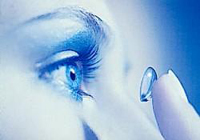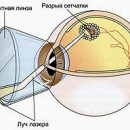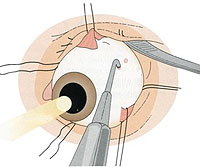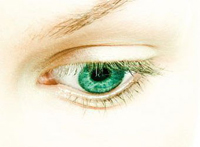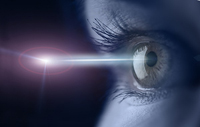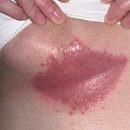Television, computer, books - eye load is very big, for many it does not understand. To improve vision, instead of traditional glasses, people are increasingly preferred to use contact lenses.
Content
It is clear: I don't interfere with the rim, it does not give anything to the bridge, everything is clear, contrast, brightly, do not break, you will not forget on the table. They can go everywhere, to go sports, wear a whole day, they can be alternating with glasses, they reduce the risk of myopia progression (myopia) – The advantages of mass. Nevertheless lenses – This is still a subject in the eye of a stranger and, if you do not know how to competently handle them, all the advantages can turn into minuses and manifest itself in the form of irritation, allergies, infections and inflammation, struck eyes.
Matter of habit
If you have a paddle before your eyes after the first day of wearing lenses – It does not mean that they are contraindicated. Most likely, you simply overdo it and the boldness arose due to the insufficient intake of oxygen to the cornea. Get used to the lenses gradually. On the first day wearing them are recommended only an hour, in the second – 1.5 hours, in the third – 2 hours.
Further, the time of wearing lenses increase half an hour later. How much can we carry lenses during the day – depends on a particular person and its sensations. Some are wearing 6–8 hours, others feel beautiful and 15–16 hours. The optimal option is the wearing lenses within 10–12 hours: during this time you and the main work will have time to do, and do not harm my eyes. The maximum is the time of carrying contact lenses, after which the patient has a fog in front of the eyes, not disappearing after the removal of the lenses for 10–15 minutes.
If you have ever had such a state, pay attention, how long did you wear lenses, without removing, and try to do not repeat more situations.
Do not forget to remove the lenses of day wearing before bedtime to avoid oxygen deficiency, which may occur with closed eyelids after 10–15 minutes.
Refuse the use of lenses if you have inflammation of the eyelids due to allergies, conjunctivitis, bacterial infection, and also if you are increased or reduced tears and rigorous material, or there is a noncompensated glaucoma. Submission of lens and squint with an angle of more than 15 degrees – Also contraindications for lenses.
With blufarite and demodicosis, contact lenses can be used in principle, but if diseases are exacerbated, then at the time of treatment from lenses will have to refuse. With blefarites and symptoms «dry» The eye must be cleaned more often and disinfect lenses or use the lenses of one day and an artificial tear. With acute inflammatory diseases, wearing contact lenses also stops to cure.
Cleanly see better
In order for the lenses to bring you only a clear eye, and not a bunch of problems, they must be careful for them. Pleasure is an expensed one, but it is impossible to save on it. Solutions, containers need to be changed so often as indicated in the instructions. Otherwise, the lenses can settle unnecessary microbes, mushrooms or some simplests, which will first grow on the lenses themselves, and then go to the eyes.
The defeat of the cornea, for example, can be caused by Akantameabe – the usual inhabitant of water, so not only do not use water to clean the containers and lenses, but do not even wear them with wet hands. In general, more than 105 species of mushrooms are known, which theoretically can lead to the development of the disease.
How to avoid problems?
- Pick the contact lenses correctly so that they do not cause permanent overwork of the eyes, this may ultimately lead to the progression of eye diseases;
- Welcome correctly and remove lenses to avoid eye injury. A foreign body caught under the lens can lead to corneal erosion;
- Try not to scratch the lens nail itself;
- Wear lenses with good gas permeability, clean and appropriate size so that there is no syndrome «Red eyes»;
- Do not use the same solution twice. Do not set the lenses in excess of the deadline to avoid the cornea edema, which is manifested by periodic or constant boding, image blur. The long-term wearing of dirty lenses can lead to follicular conjunctivitis due to the violation of the immune response to the spree products of proteins accumulating under the contact lens, and to the syndrome «Dry eyes»;
- Thoroughly wash your hands and wipe them dry every time before putting on and removing lenses;
- Do not use contact lenses during colds and other infectious diseases, since during this period there may be complications on the eyes;
- With the appearance of redness of the eyes, their irritation, the feelings of the foreign body in the eye immediately remove the lenses and in the near future consult a doctor-ophthalmologist. In the absence of any complaints anyway, attend an ophthalmologist once a year and check the quality of your vision.
The choice of lenses is colossal: Hard contact lenses of any design with the highest oxygen permeability, soft contact lenses of planned replacement, traditional soft lenses with a replacement of 6 months and less often, superproof for oxygen silicone hydrogel lenses of day or continuous wearing with a replacement from 2 weeks to one month...
Basic errors when using lenses
- Using lenses longer than the time recommended by the doctor;
- the use of an expired solution;
- the absence of a daily shift of the disinfectant solution in a container for lenses;
- An open bottle with a solution left after use;
- use for flushing containers not a special solution, but simple water;
- Container change less often than every three months;
- sleep in lenses not intended for round-the-clock wearing;
- Neakkurat handling of lenses, damaging their surface;
- Using contact lenses in the presence of inflammatory eye diseases (conjunctivitis, blufarites) in the aggravation stage.
All of the above applies to cosmetic (color) lenses.

